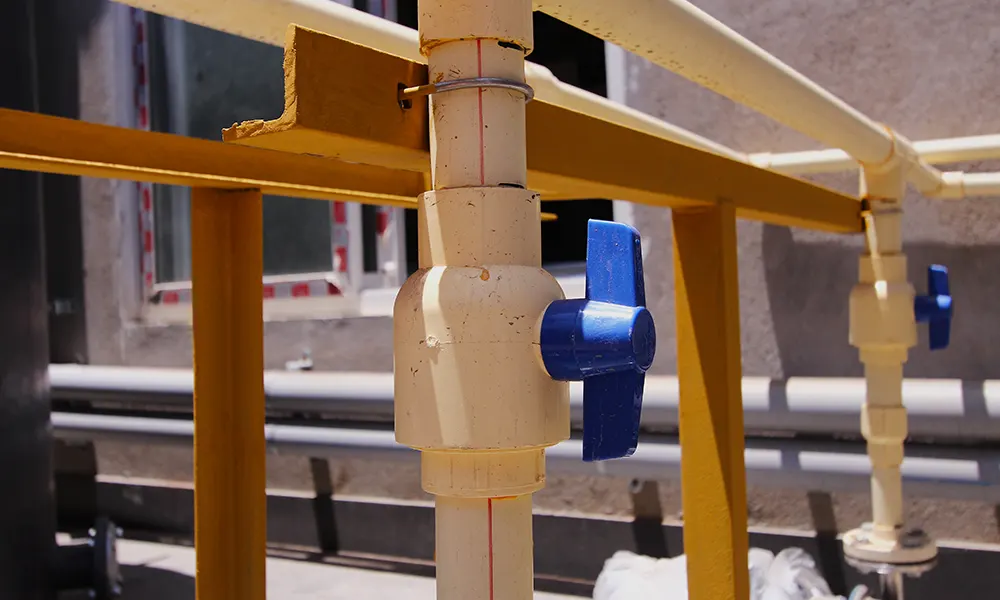
September 19, 2025

Read Time
4
Planning an Extension? 3 Plumbing Risks to Check Before Building Over Pipes
Have you checked what’s under your slab?
If you’re planning an extension in Sydney, one of the most overlooked yet critical issues is building over sewer lines.
It sounds harmless until you realise it could compromise your entire home’s structural integrity, trigger costly repair bills, or even get your plans rejected.
Let’s walk you through the 3 major plumbing risks every Sydney homeowner needs to understand before building over existing pipes.
Whether you're planning a granny flat, second storey, or new bathroom, this guide could save you from serious trouble.
1: Structural Damage From Building Over Sewer Pipes
When your extension’s foundation sits on top of sewer or stormwater pipes, even minor building movement can crack or crush those pipes beneath.
This isn't just hypothetical; it’s a common issue in older Sydney homes.
Even a well-laid slab can settle unevenly over time, putting pressure on underground infrastructure.
Consequences of structural damage:
- Pipe collapse, leading to backups and leaks
- Foundation compromise, if leaking water undermines soil stability
- Tens of thousands in repairs, both structural and plumbing
To prevent this, always identify pipe locations before finalising your building plans. Engage a licensed plumber for accuracy.
2: Restricted Access for Future Maintenance
Another major risk is limiting or completely removing access to crucial underground pipework. When building over sewer Sydney properties, some homeowners forget that pipes still need maintenance, especially shared or public ones.
What restricted access can cause:
- Costly rerouting of plumbing if access is blocked
- Excavation under slabs to repair minor leaks
- Legal headaches, especially if it's a Sydney Water asset
In some cases, you may even need to demolish part of the extension to access the pipe—talk about a worst-case scenario.
Instead, consider installing inspection openings, risers, or rerouting pipes before construction starts.
3: Health and Environmental Hazards
Building over drainage doesn’t just cause logistical issues, it can become a serious health and safety concern.
If a sewer pipe under your home leaks, it can contaminate soil, groundwater, or even indoor air. Worse yet, you may not even notice until someone gets sick or your yard starts stinking.
Environmental and hygiene risks include:
- Soil contamination from sewage leaks
- Mould and odours from unnoticed water seepage
- Blocked airflow, leading to methane gas build-up
It's essential to assess these hazards early with professional inspections and, if needed, reposition your pipework.
Understanding Sydney’s Rules on Building Over Pipes
Short answer: Yes, but only with permission.
In Sydney, building over the sewer infrastructure requires approval from Sydney Water, particularly if the asset is shared or considered critical.
You'll need to follow technical guidelines like the Building over or Adjacent to Pipe Assets Policy, which outlines:
- Required clearance distances
- When pipe encasement or rerouting is mandatory
- Guidelines for access chambers and inspection points
How to Protect Your Build and Pipes
Before breaking ground, work through this checklist:
- Survey your site: Use plumbing maps or pipe-locating tools
- Engage a qualified plumber: Don’t rely on guesswork
- Request a condition assessment: Know the current state of your pipes
- Consult Sydney Water: Especially for shared infrastructure
- Consider rerouting: It’s often cheaper than fixing damage later
- Maintain access points: Use risers or inspection hatches
Why DIY Plumbing in Extensions is a Bad Idea
While the temptation to save money on your extension is real, DIY plumbing can cost you more in the long run. Poorly installed or unapproved plumbing can void your insurance, fail council inspections, and lead to costly remediation work.
Final Thought
If you’re planning to build over sewer Sydney property infrastructure, don’t leave anything to chance. This isn’t just about pipes; it’s about your home’s safety, longevity, and compliance.
At Sewer Surgeon, we specialise in identifying, protecting, and rerouting plumbing systems before construction. With over 30 years of experience, our Sydney team knows exactly what to look for and how to keep your build compliant and hassle-free.
To book a professional plumbing assessment for your extension, call Sewer Surgeon today at 1300 734 677. Our team will help you safely navigate building over sewer Sydney regulations and save you from future headaches.
Need help fast? Contact us here to get started.
Frequently Asked Questions
Can I build over a sewer pipe in Sydney?
Yes, but only with approval from Sydney Water and adherence to technical standards. You may need to reroute the pipe or provide special access points.
What happens if I damage a pipe during my extension?
You’ll likely be liable for the full cost of repairs, and it may delay or even halt your build. Worse still, water damage could affect the home’s foundation.
How do I find out if a sewer pipe runs under my property?
Use utility mapping tools, or hire a licensed plumber to perform a CCTV pipe inspection and identify exact locations before building.
Can I get fined for building over pipes without approval?
Yes. Building without permission over sewer infrastructure can lead to hefty fines, orders to demolish the structure, or disconnection of services.
Should I reroute the pipes before building?
In many cases, rerouting can save time, money, and stress in the long term—especially if the pipe is old, damaged, or in a high-risk location.

Andy Quinn
Founder
Andy Quinn is the founder of Sewer Surgeon, a family-owned plumbing business serving Sydney with over 63 years of combined industry expertise. Andy and his team specialize in delivering reliable solutions for everything from blocked drains to emergency plumbing, ensuring quality service and customer satisfaction.

.png)
.png)
.png)
.png)
.png)
.png)




.png)





.png)




